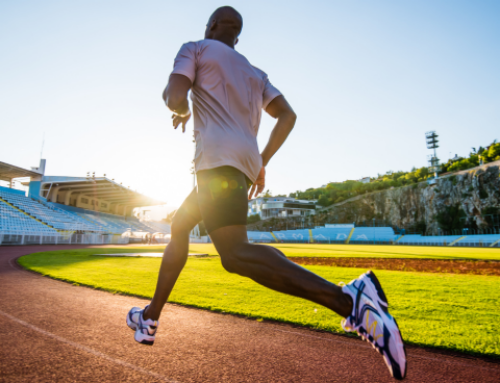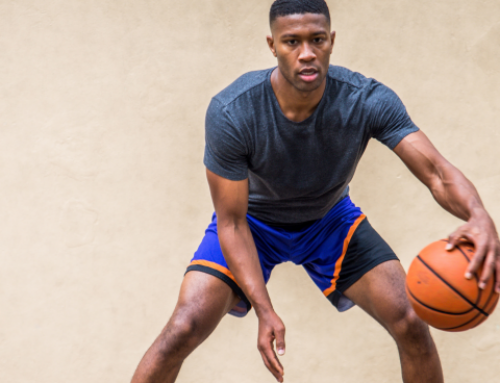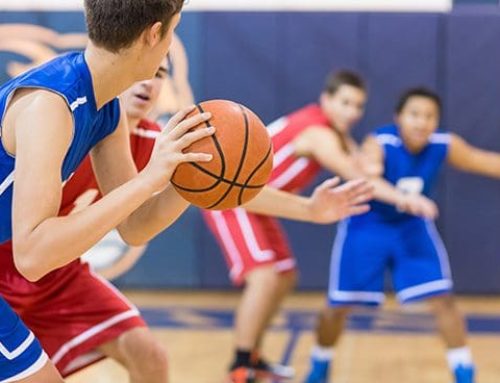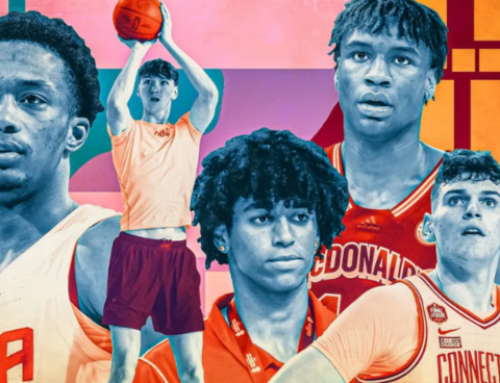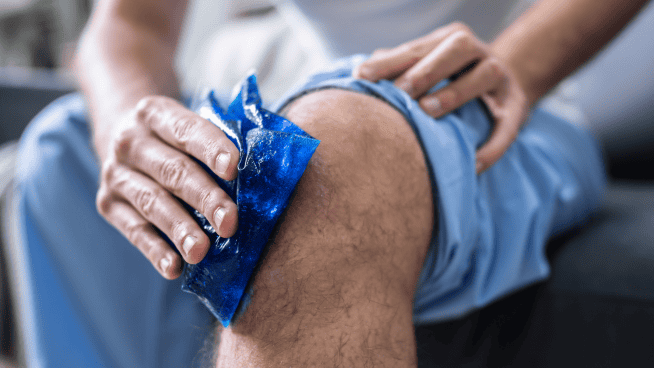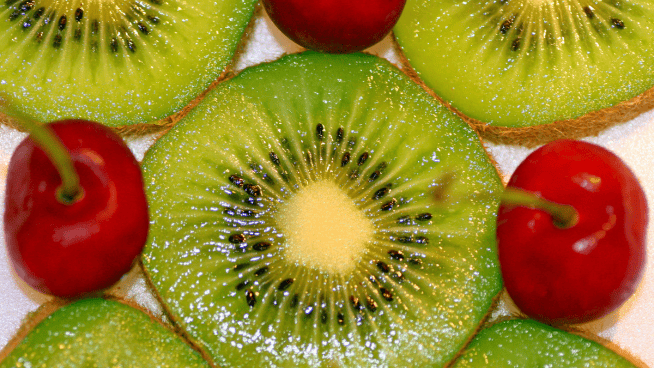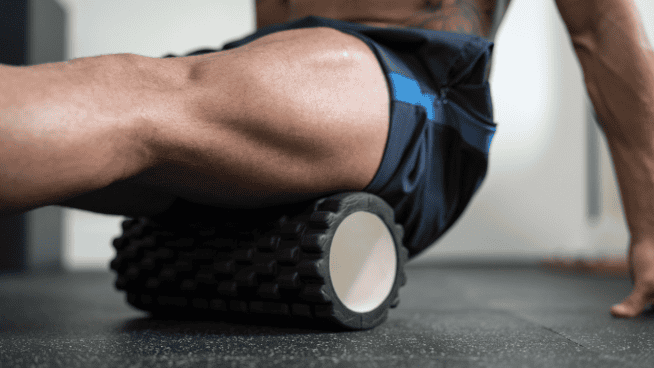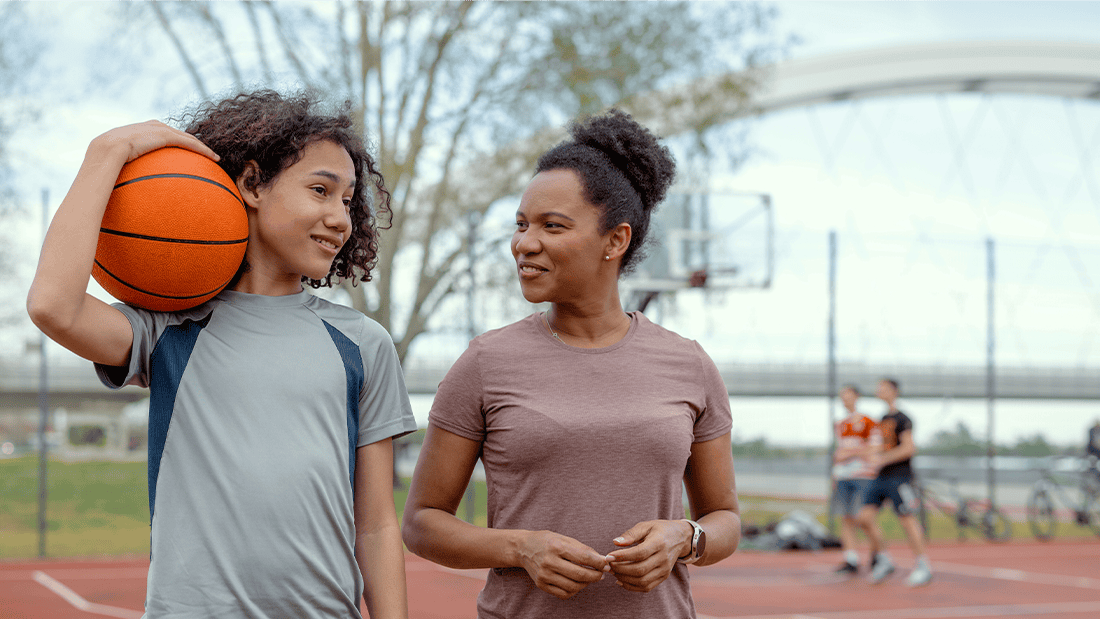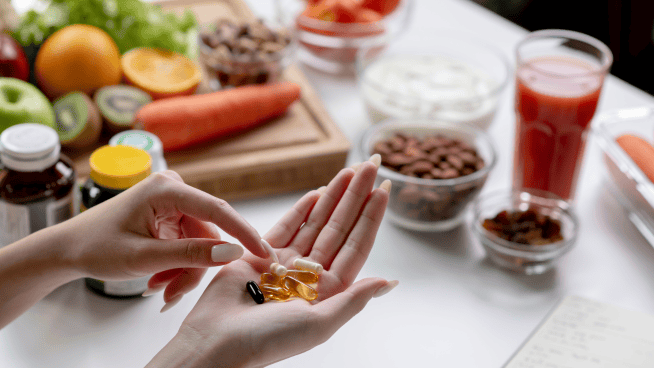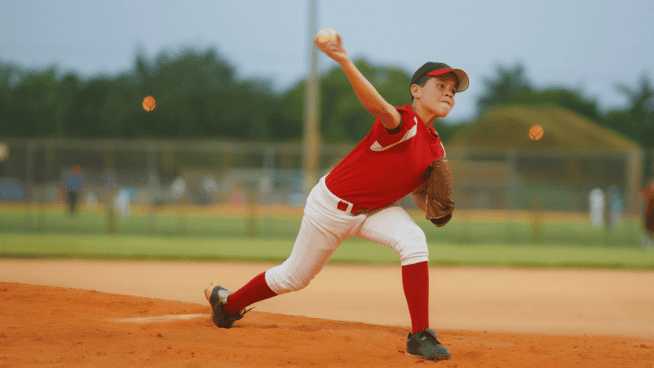Basketball Strength and Conditioning with Tim Grover
You can’t just play basketball to get better at basketball. Perfect passes and an untouchable jumper aren’t the only skills you need to wreck the court. You also need to be strong and well conditioned, which result from time in the weight room and on the track.
We know this doesn’t sound too appealing, because like most true players, you probably can’t get enough of the ball in your hands and your feet on the court. You love the game and live to play it. If you’ve got a choice between lifting and playing, you take the rock and head for the hoop.
Tim Grover’s NBA star clients feel the same way—from veteran players like Elton Brand and Shawn Marion to up-and-comers like Andre Igoudala, Devin Harris and Dwight Howard. These cats just want to ball. But they understand Grover’s efforts to maximize all aspects of their athletic potentials.
Owner and operator of Attack Athletics in Chicago, Grover has been making the best better since the days of Jordan and Pippen. His training first takes athletes off the court to help their games—and verts—reach new heights. Then, using his clients’ passion for the game as incentive, Grover sends them back to the hardwood for pickup games.
These runs aren’t your average schoolyard contests or street ball showdowns, though. The teams’ rosters read like an All-Star game’s, and the three-man officiating crews are the same ones used in real NBA contests. The games are legit, intense and set up to pin strength against strength and, more important, strength against weakness—forcing each player to take his game to a new level.
Grover determines who plays and who doesn’t. He makes the match-ups and the substitutions. And if you’re a no-show for your workout, you’re a no-go for the game—meaning you might miss an occasional opportunity to D up on MJ himself. But if you bust it hard during your training, you’ll be on the floor for the 5-on-5 runs to seven by one.
To give you a taste of what D-Wade, Quentin Richardson and other NBA stars go through to get a piece of these legendary pickup games, Grover provides a few lifts and conditioning drills that he uses with his athletes. Check out his recommendations, put ’em to use and see if they take you to Hoops Gym to ball with the best.
Weight Training
It’s never accurate to say that athletes of certain sports need strength only in specific areas of their bodies. Full-body strength is essential for every athlete. That said, each sport requires more strength in certain areas than in others. For basketball, the shoulders and legs are those areas.
Grover says, “In basketball, your arms are constantly overhead, which requires your shoulders to work. And since you can’t push off with your arms, you need to be able to hold your position and fight for your spot on the court using only your legs and hips.”
Grover suggests Deadlifts, Squats and Good Mornings to strengthen your legs; Standing Alternating Dumbbell Presses for your shoulders; and Power Cleans to improve strength in both. For all lifts, he recommends 5 sets of 3 to 6 reps with 2 to 3 minutes rest, 2 to 3 times a week.
“For Deadlifts, Squats and Power Cleans, keep your knees over your feet and your lower back as straight as possible. Drive with your hips and legs, keep your core tight and perform the exercises as quickly as you can,” he says. Good Mornings are the only exercise you shouldn’t perform for speed, because it increases the chance of injury.
For the Standing Alternating Dumbbell Press, maintain a tight core while lifting the weight overhead, and lift for speed.
Deadlift
• Start in squatted position with feet hip-shoulder width apart and bar on ground
• Grip bar one palm in, one palm out
• Keep feet flat on ground and low back tight
• Extend at ankles, knees and hips
• Lift bar until standing upright
Standing Alternating Dumbbell Press
• Stand holding dumbbells at shoulder level with tight core
• Drive one dumbbell toward ceiling until arm is straight
• Do not lean backward or to side
• Lower and repeat with other dumbbell
Power Clean
• Start with bar touching shins
• Grip bar just outside athletic stance, then get into deadlift position with back locked, shoulders up, abs and chest flexed
• Begin initial pull by extending hips and knees
• When bar is just above knees, begin second pull; explode by forcefully shrugging and fully extending hips, knees and ankles
• Pull bar up keeping it close to chest
• Drop under bar and catch along front of shoulders in athletic stance with knees bent
Good Mornings
• Stand with bar resting on back and knees slightly bent
• Bend forward at hips keeping back flat and tight
• Drive hips back
Squat
• Begin in athletic stance with toes pointing slightly out and bar resting on traps
• Pick eye-level focus point on wall
• Squat down with control and good posture until thighs are parallel to ground
• Keep weight back on heels
• Drive out of squat into starting position keeping chest out
Conditioning
Explosive speed and agility are needed to drive past a defender or stay with your man, and each possession change requires a 94-foot run to the other end of the court. These factors plus very little downtime make top conditioning a necessity.
“Superior conditioning gives your team an edge,” Grover says. “When you are highly conditioned, you can perform at a higher intensity and sustain a more effective effort than other players.”
To get his clients “highly conditioned,” Grover uses stride workouts for the first three weeks. He starts with 400m sprints, allowing full recovery after each. In the second week, he adds an extra rep, and in the third week he cuts the rest time. Once his athletes establish a base, Grover moves to on court conditioning drills, which incorporate acceleration, deceleration, cutting and change of direction.
“These drills have a unique benefit,” Grover says. “They condition you so that your body’s energy system recovers halfway in about 30 seconds, which is the rest you get during a free throw. Your system fully recovers in about three minutes, which corresponds to the timeouts called during actual play.”
Stride Workout
Perform each routine two times a week
Week 1: Run 5 400m sprints; rest 3 minutes between
Week 2: Run 6 400m sprints; rest 3 minutes between
Week 3: Run 6 400m sprints; rest 2 minutes between
Court Workout
Perform one drill a day six days a week; alternate the drills each day.
Half Court, Full Court
• Start at one baseline
• Sprint to half court
• Sprint back to baseline
• Sprint to other baseline
• Sprint back to original baseline
• Sprint to half court
• Cover as much distance as you can in 60 seconds
• Repeat 3 times, rest 2 minutes between sets
Sideline Drill
• Start at one sideline
• Sprint to other sideline and back
• Do as many as possible in 60 seconds
• Repeat 3 times, rest 2 minutes between sets
Coaching Point: Run in a straight line, use your arms, touch the lines, keep your stride length consistent and keep your head up.
Grover’s Gear
If you’re personally training with Grover, you’re an NBA baller, or at least preparing for the Draft. But if you don’t fall under either category, Grover is still at your disposal through his book, Jump Attack: The Formula for Vertical Game, and piece of training gear, the P.P.T. Band.
Jump Attack details Grover’s training regimen that can boost your vert, improve your explosiveness and keep you off the sidelines. Based off the same methods he used with MJ and still uses today with D Wade, this plan has stood the test of time.
The P.P.T. Band is a huge rubber band you can use to increase flexibility and prevent injury to the lower legs and ankles. The band comes with a fully illustrated training guide that details how to use it to stay healthy.
Check out www.attackathletics.com for more information and to purchase.
RECOMMENDED FOR YOU
Basketball Strength and Conditioning with Tim Grover
You can’t just play basketball to get better at basketball. Perfect passes and an untouchable jumper aren’t the only skills you need to wreck the court. You also need to be strong and well conditioned, which result from time in the weight room and on the track.
We know this doesn’t sound too appealing, because like most true players, you probably can’t get enough of the ball in your hands and your feet on the court. You love the game and live to play it. If you’ve got a choice between lifting and playing, you take the rock and head for the hoop.
Tim Grover’s NBA star clients feel the same way—from veteran players like Elton Brand and Shawn Marion to up-and-comers like Andre Igoudala, Devin Harris and Dwight Howard. These cats just want to ball. But they understand Grover’s efforts to maximize all aspects of their athletic potentials.
Owner and operator of Attack Athletics in Chicago, Grover has been making the best better since the days of Jordan and Pippen. His training first takes athletes off the court to help their games—and verts—reach new heights. Then, using his clients’ passion for the game as incentive, Grover sends them back to the hardwood for pickup games.
These runs aren’t your average schoolyard contests or street ball showdowns, though. The teams’ rosters read like an All-Star game’s, and the three-man officiating crews are the same ones used in real NBA contests. The games are legit, intense and set up to pin strength against strength and, more important, strength against weakness—forcing each player to take his game to a new level.
Grover determines who plays and who doesn’t. He makes the match-ups and the substitutions. And if you’re a no-show for your workout, you’re a no-go for the game—meaning you might miss an occasional opportunity to D up on MJ himself. But if you bust it hard during your training, you’ll be on the floor for the 5-on-5 runs to seven by one.
To give you a taste of what D-Wade, Quentin Richardson and other NBA stars go through to get a piece of these legendary pickup games, Grover provides a few lifts and conditioning drills that he uses with his athletes. Check out his recommendations, put ’em to use and see if they take you to Hoops Gym to ball with the best.
Weight Training
It’s never accurate to say that athletes of certain sports need strength only in specific areas of their bodies. Full-body strength is essential for every athlete. That said, each sport requires more strength in certain areas than in others. For basketball, the shoulders and legs are those areas.
Grover says, “In basketball, your arms are constantly overhead, which requires your shoulders to work. And since you can’t push off with your arms, you need to be able to hold your position and fight for your spot on the court using only your legs and hips.”
Grover suggests Deadlifts, Squats and Good Mornings to strengthen your legs; Standing Alternating Dumbbell Presses for your shoulders; and Power Cleans to improve strength in both. For all lifts, he recommends 5 sets of 3 to 6 reps with 2 to 3 minutes rest, 2 to 3 times a week.
“For Deadlifts, Squats and Power Cleans, keep your knees over your feet and your lower back as straight as possible. Drive with your hips and legs, keep your core tight and perform the exercises as quickly as you can,” he says. Good Mornings are the only exercise you shouldn’t perform for speed, because it increases the chance of injury.
For the Standing Alternating Dumbbell Press, maintain a tight core while lifting the weight overhead, and lift for speed.
Deadlift
• Start in squatted position with feet hip-shoulder width apart and bar on ground
• Grip bar one palm in, one palm out
• Keep feet flat on ground and low back tight
• Extend at ankles, knees and hips
• Lift bar until standing upright
Standing Alternating Dumbbell Press
• Stand holding dumbbells at shoulder level with tight core
• Drive one dumbbell toward ceiling until arm is straight
• Do not lean backward or to side
• Lower and repeat with other dumbbell
Power Clean
• Start with bar touching shins
• Grip bar just outside athletic stance, then get into deadlift position with back locked, shoulders up, abs and chest flexed
• Begin initial pull by extending hips and knees
• When bar is just above knees, begin second pull; explode by forcefully shrugging and fully extending hips, knees and ankles
• Pull bar up keeping it close to chest
• Drop under bar and catch along front of shoulders in athletic stance with knees bent
Good Mornings
• Stand with bar resting on back and knees slightly bent
• Bend forward at hips keeping back flat and tight
• Drive hips back
Squat
• Begin in athletic stance with toes pointing slightly out and bar resting on traps
• Pick eye-level focus point on wall
• Squat down with control and good posture until thighs are parallel to ground
• Keep weight back on heels
• Drive out of squat into starting position keeping chest out
Conditioning
Explosive speed and agility are needed to drive past a defender or stay with your man, and each possession change requires a 94-foot run to the other end of the court. These factors plus very little downtime make top conditioning a necessity.
“Superior conditioning gives your team an edge,” Grover says. “When you are highly conditioned, you can perform at a higher intensity and sustain a more effective effort than other players.”
To get his clients “highly conditioned,” Grover uses stride workouts for the first three weeks. He starts with 400m sprints, allowing full recovery after each. In the second week, he adds an extra rep, and in the third week he cuts the rest time. Once his athletes establish a base, Grover moves to on court conditioning drills, which incorporate acceleration, deceleration, cutting and change of direction.
“These drills have a unique benefit,” Grover says. “They condition you so that your body’s energy system recovers halfway in about 30 seconds, which is the rest you get during a free throw. Your system fully recovers in about three minutes, which corresponds to the timeouts called during actual play.”
Stride Workout
Perform each routine two times a week
Week 1: Run 5 400m sprints; rest 3 minutes between
Week 2: Run 6 400m sprints; rest 3 minutes between
Week 3: Run 6 400m sprints; rest 2 minutes between
Court Workout
Perform one drill a day six days a week; alternate the drills each day.
Half Court, Full Court
• Start at one baseline
• Sprint to half court
• Sprint back to baseline
• Sprint to other baseline
• Sprint back to original baseline
• Sprint to half court
• Cover as much distance as you can in 60 seconds
• Repeat 3 times, rest 2 minutes between sets
Sideline Drill
• Start at one sideline
• Sprint to other sideline and back
• Do as many as possible in 60 seconds
• Repeat 3 times, rest 2 minutes between sets
Coaching Point: Run in a straight line, use your arms, touch the lines, keep your stride length consistent and keep your head up.
Grover’s Gear
If you’re personally training with Grover, you’re an NBA baller, or at least preparing for the Draft. But if you don’t fall under either category, Grover is still at your disposal through his book, Jump Attack: The Formula for Vertical Game, and piece of training gear, the P.P.T. Band.
Jump Attack details Grover’s training regimen that can boost your vert, improve your explosiveness and keep you off the sidelines. Based off the same methods he used with MJ and still uses today with D Wade, this plan has stood the test of time.
The P.P.T. Band is a huge rubber band you can use to increase flexibility and prevent injury to the lower legs and ankles. The band comes with a fully illustrated training guide that details how to use it to stay healthy.
Check out www.attackathletics.com for more information and to purchase.

